|
A 10-year-old domestic short hair cat was referred for investigation of anorexia and polydipsia of 3 days’ duration. Clinically the cat was obese, pyrexic (39.8 °C), had acute abdominal pain and severe bilirubinuria. Haematology and serum biochemistry revealed severe panleukopenia, thrombocytopenia, markedly elevated alanine aminotransferase (ALT) and five-fold increased pre-prandial bile acids. Ultrasonographic evaluation of the abdomen did not identify any abnormalities. Serum tests for feline immunodeficiency virus (FIV) and feline leukaemia virus (FeLV) were negative. Broad-spectrum antibiotic treatment for infectious hepatitis was to no avail; the cat deteriorated and died 72 h after admission. Necropsy revealed mild icterus and anaemia, severe multifocal hepatic necrosis, serofibrinous hydrothorax, pulmonary oedema and interstitial pneumonia. Histopathology confirmed the macroscopic findings and revealed multifocal microgranulomata in the brain and myocardium, as well as areas of necrosis in lymph nodes and multifocally in splenic red pulp. Long bone shaft marrow was hyperplastic with a predominance of leukocyte precursors and megakaryocytes and splenic red pulp showed mild extramedullary haemopoiesis. Immunohistochemical staining for Toxoplasma gondii was strongly positive, with scattered cysts and tachyzoites in the liver, lymph nodes, spleen, lungs, brain, salivary glands and intracellularly in round cells in occasional blood vessels. Immunohistochemical staining for corona virus on the same tissues was negative, ruling out feline infectious peritonitis (FIP). Polymerase chain reaction (PCR) on formalin-fixed paraffin-wax embedded tissues was positive for Toxoplasma sp., but attempts at sequencing were unsuccessful. This was the first case report of fulminant disseminated toxoplasmosis in South Africa, in which detailed histopathology in an apparently immunocompetent cat was described.
Toxoplasma gondii is a zoonotic obligate intracellular coccidian protozoon known to cause occasional clinical illness in cats and dogs. Cats are the definitive hosts of the sexual stage of the parasite and pass environmentally resistant oocysts in their faeces. Sporozoites develop in oocysts within 1–5 days under favourable environmental conditions. Millions of oocysts are faecally shed 1–3 weeks after ingestion of sporulated oocysts or tissue cysts (Cenci-Goga et al. 2011; Lappin 2009; Tobias 1990). After the oocyst shedding phase, cats develop immunity which can last for up to 6 years or more; hence, faecal examination of seropositive cats is often negative for oocysts (Cenci-Goga et al. 2011).In the asexual stage (sporozoites, tachyzoites and bradyzoites), T. gondii has little intermediate host specificity, being able to parasitise homeotherms including some birds and all mammals (Cenci-Goga et al. 2011), but usually only develop disease if in an immunocompromised state, as is also the case in cats (Davidson et al. 1993; Foster et al. 1998; O’Neil et al. 1991; Sato, Yoshiki & Iwamoto 1994). Adult humans who are not immunocompromised rarely show clinical signs of toxoplasmosis; however, cases of pneumonia in immunocompetent individuals have been reported in French Guiana and were attributed to genetically atypical highly virulent strains (Carme et al. 2002). In all susceptible species, tachyzoites divide rapidly intracellularly (causing cell destruction), are disseminated in blood or lymph during active infection, and can be detected in blood, aspirates and effusions in some animals with disseminated disease. Bradyzoites are slowly dividing, persistent tissue stages that are formed in cysts in the central nervous system (CNS), muscles and visceral organs (Lappin 2009). Re-activated, acute infection can occur (as seen with immunocompromised disease states) as the result of bradyzoites persisting in the tissues for the life of the host, regardless of administration of appropriate treatment (Toomey et al. 1995). Various publications describe different clinical manifestations of feline toxoplasmosis (Anfray
et al. 2005; Lappin et al. 1992; McConnell et al. 2007; Nordquist & Aronson 2008; Pfohl & Dewey 2005; Simpson, Devine & Gunn-Moore 2005; Tobias 1990). The first case of cutaneous toxoplasmosis was reported in a female Japanese cat (Park et al. 2007). Pyogranulomatous cystitis associated with T. gondii 6 weeks after renal transplantation has also been described (Nordquist & Aronson 2008). Both donor and recipient cats were seronegative for Toxoplasma-specific IgG antibodies prior to transplantation (Nordquist & Aronson 2008). Disseminated feline toxoplasmosis is rare. Current literature suggests that an immunocompromised state, such as in cats with feline immunodeficiency virus (FIV), and/or feline infectious peritonitis (FIP), or those subject to potent inhibitors of cell-mediated immunity such as cyclosporin, is the main factor predisposing to the development of disseminated disease (Barrs, Martin & Beatty 2006; Davidson et al. 1993; Foster et al. 1998; Heidel et al. 1990; Lappin et al. 1992; Last et al. 2004; Nordquist & Aronson 2008; Park et al. 2007; Patton et al. 1991; Toomey et al. 1995). Fatal toxoplasmosis can develop during acute intracellular replication and systemic dissemination of tachyzoites. Hepatic, pulmonary, CNS and pancreatic tissues are commonly involved (Foster et al. 1998).
A 10-year-old female spayed 3.8 kg domestic shorthair cat in good body condition was presented with sudden anorexia and polydipsia of 3 days’ duration. Vaccination status was unknown. Clinical examination revealed mild pyrexia (39.8 °C), mild tachycardia (180 beats per min), moderate tachypnoea (60 breaths per min) and severe abdominal discomfort on palpation (i.e. ‘acute’ abdomen). Minimum database included blood smear evaluation, in which severe leukopenia and a mild to moderate amount of Heinz bodies were evident, and urinalysis via cystocentesis, where severe proteinuria (3+), haematuria (4+) and moderate to severe bilirubinuria (3+) were found on the dipstick (Combur test; Roche Diagnostics GmbH, Mannheim, Germany). Urine sediment showed microscopic haematuria (3+ red blood cells), most likely from the cystocentesis. The rectum was devoid of faeces. Initial differential diagnoses in this cat included inflammatory intra-abdominal disorders (peritonitis, gastritis, pancreatitis, hepatitis, cholecystitis, cholangiohepatitis, inflammatory bowel disease, cystitis, pyelonephritis and urolithiasis), hepatotoxins (lead) and hepatic, intestinal or pancreatic neoplasia (lymphoma, adenocarcinoma). Haematology revealed severe leukopenia (2.94 × 109/L, reference range 7.0–20.5), with degenerative left shift (absolute immature neutrophil count 0.71 × 109/L, reference range 0.0–0.3), severe mature neutropenia (absolute mature neutrophil count 1.23 × 109/L, reference range 2.50–15.37), moderate lymphopenia (absolute lymphocyte count 0.65 × 109/L, reference range 1.5–7.0), moderate monocytopenia (absolute monocyte count 0.00 × 109/L, reference range 0.07–0.80) and severe thrombocytopenia (69.00 × 109/L, reference range 300–600). These results suggested a suppressed immune state, possibly caused by overwhelming infection (sepsis). Biochemical analysis of serum showed moderate hypoalbuminaemia (19.3 g/L, reference range 25–36), moderate hyperglobulinaemia (59.6 g/L, reference range 22–48), mild hypokalaemia (3.44 mmol/L, reference range 4.0–5.1), 32× elevated alanine aminotransferase (ALT)
1355 IU/L, reference range 3.6–42.0), and 5× increased fasting bile acids (28.08 µmol/L, reference range 0–5). The FIV/ feline leukaemia virus (FeLV) snap test (Antigen Rapid
FIV Ab/FeLV Ag Test Kit; BioNote Inc., Hwaseong-si, Gyeonggi-do, South Korea) was negative for both viruses. At this stage, the elevated ALT, marked bilirubinuria and severe leukopenia pointed towards overwhelming hepatic injury or hepatitis with sepsis. The main differential diagnoses included bacterial (Helicobacter spp., Salmonella spp., Klebsiella spp., etc.), viral (FIP, FeLV) or protozoal parasitic (toxoplasmosis) hepatitis, cholangiohepatitis, hepatic neoplasia, cholelithiasis and pancreatitis. Abdominal ultrasonography revealed a homogenously normoechoic liver and prominent hypoechoic mesenteric lymph nodes. Thoracic radiographs were unremarkable. At this stage, none of the abovementioned differential diagnoses for hepatic disease, neoplasia or pancreatic disease could be excluded, because diffuse organ lesions may not demonstrate obvious ultrasonographic abnormalities. Apart from the fact that the feline pancreas may be difficult to visualise ultrasonographically, it is also an operator-dependent modality and lesions may therefore be missed. Symptomatic treatment included: intravenous crystalloid fluid therapy (Intramed Ringer-Lactate solution®; Fresenius Kabi, Midrand, South Africa) supplemented with potassium chloride (Potassium Chloride®, Fresenius 15%; Fresenius Kabi, Midrand, South Africa), the broad-spectrum antibiotics amoxycillin-clavulanic acid (Ranclav®; Ranbaxy, Centurion, South Africa) at 20.000 mg/kg intravenously every 8 h and enrofloxacin (Baytril 5%®; Bayer [Pty] Ltd Animal Health Div, Isando, South Africa) at 5.000 mg/kg subcutaneously every 24 h, as well as buprenorphine (Temgesic®; Schering-Plough, Woodmead, South Africa) for analgesia at
0.015 mg/kg intravenously every 12 h and an H2-blocker, ranitidine (Zantac®; GlaxoSmithKline, Bryanston, South Africa), administered at 2.000 mg/kg intravenously every
12 h. A nasoesophageal tube feeding was initiated according to current recommendations for cats by calculating the resting energy requirement (RER) using the formula 70 × (body weight in kg)0.75. Day 1 of feeding was started at 50% of the calculated RER divided into six meals per 24 h. Over the subsequent 24 h the cat became increasingly depressed and lethargic. Repeat haematology revealed a slightly increased white cell count from that which was previously recorded (3.1 × 109/L), but worsening thrombocytopenia (48.0 × 109/L). ALT had increased to 45× normal (1888 IU/L), total serum bilirubin to more than 4× reference range (28.8 µmol/L, reference range 1.0–6.8); there was severe hypokalaemia (2.86 mmol/L) and serum amylase and lipase were within normal limits. Further assessment (determination of feline corona virus antibody and liver biopsy) was not conducted, as the cat became hypothermic, severely dyspnoeic and died within
72 h of presentation.
Necropsy and histopathology
Faecal flotation performed at necropsy showed occasional small, round coccidian oocysts, which were thought to be Toxoplasma oocysts. The carcass was mildly icteric, anaemic and body condition moderately obese. Numerous multifocal, small, pale foci 1 mm – 3 mm in diameter were prominent in the liver (Figure 1). Serofibrinous hydrothorax with severe, diffuse, pulmonary oedema and moderate congestion were present, with suspected interstitial pneumonia (Figure 2). Histopathology revealed severe multifocal hepatic necrosis, haemorrhage and intracellular and extracellular bile stasis (Figure 3) and confirmed severe diffuse interstitial pneumonia with small airways containing occasional plugs of neutrophils and active macrophages (Figure 4). There was subacute, multifocal, lymphoplasmacytic pancreatitis
Figure 5), multifocal microgranulomatous encephalitis (Figure 6), multifocal round cell myocarditis, with some perivascular microgranulomata, and mild multifocal lymphoplasmacytic interstitial nephritis with scattered small subcapsular fluid-filled cysts. The pancreatic lymph node had large areas of medullary necrosis with early fibrosis and fibrin, immunoblasts with large anaplastic nuclei, and indistinct cortical follicles (Figure 7). Mesenteric and mandibular lymph nodes had marked sinus histiocytosis and active lymphocytic phagocytosis by cortical dendritic macrophages, giving a ‘starry sky’ effect. Bone marrow of the long bone shaft origin was densely cellular, with up to 10 megakaryocytes per high power field, a myeloid to erythroid precursor ratio of 1.5:1.0 and an increase in large blast cells and mitotic figures. Mild extra-medullary haemopoiesis occurred in the splenic red pulp as well as multifocal small areas of necrosis and an increase in mononuclear cells was observed. There was also mild multifocal lymphoplasmacytic sialoadenitis.
 |
FIGURE 1:
Severe hepatic mottling was observed in the cat in this case report,
with systemic toxoplasmosis consistent with multifocal necrosis and microhaemorrhages.
|
|
 |
FIGURE 2:
Moderate serofibrinous hydrothorax, pulmonary oedema, congestion
and diffuse interstitial pneumonia were evident on postmortem examination in
this case of feline toxoplasmosis
|
|
 |
FIGURE 3:
Toxoplasma gondii infection in the liver of the cat in this case report
resulted in multifocal hepatic necrosis (horizontal arrow) and haemorrhage
(vertical arrow), with marked intracellular and extracellular bile stasis
(haematoxylin and eosin stain).
|
|
 |
FIGURE 4:
Haematoxylin and eosin stained section of lung tissue from the cat
in this case report, with systemic toxoplasmosis revealed diffuse interstitial
pneumonia and fibrillar alveolar oedema.
|
|
 |
FIGURE 5:
Multifocal subacute lymphoplasmacytic pancreatitis was noted in the
cat in this case report as a result of systemic toxoplasmosis.
|
|
 |
FIGURE 6:
Medulla oblongata granulomatous encephalitis, myelin degeneration
and neuronal necrosis (horizontal arrow) (haematoxylin and eosin
stain) were caused by Toxoplasma gondii infection in the cat in this
case report.
|
|
 |
FIGURE 7:
Necrotic medulla of pancreatic lymph node in the cat in this
case report (white arrow, haematoxylin and eosin stain) as a result of feline
systemic toxoplasmosis.
|
|
 |
FIGURE 8:
Toxoplasma gondii tachyzoites (horizontal arrow) and a cyst (vertical
arrow) in the pancreatic lymph node (immunohistochemical staining) of the cat
in this case report.
|
|
Immunohistochemistry
A diagnosis of disseminated toxoplasmosis was suspected and immunohistochemical (IMH) staining for T. gondii organisms was performed using polyclonal rabbit antibody (Dr J.P. Dubey, United States Department of Agriculture, Beltsville, USA) and the avidin-biotin peroxidase complex technique of Haines and Chelack (1991). IMH staining was found to be strongly positive on small pieces of most tissues, with bradyzoites-containing cysts and free tachyzoites visualised in liver, pancreatic lymph node (Figure 8), spleen, brain, heart, lungs, and intracellularly in some mononuclear inflammatory cells in occasional blood vessels. Feline tissue positive for T. gondii, which had been tested previously by Polymerase chain reaction (PCR) and IMH, was stained simultaneously as positive control (Haines & Chelack 1991). The same tissues were stained immunohistochemically with feline coronavirus monoclonal antibody (Custom Monoclonals International, West Sacramento, USA) against a known IMH- positive and PCR-positive FIP control cat section and found to be negative.
Polymerase chain reaction testing and sequencing
Wax-embedded formalin-fixed tissues, including pancreas, pancreatic and mesenteric lymph nodes, liver and lung were sent to the laboratory of Dr J.P. Dubey for PCR testing and possible sequencing for typical or atypical strains. DNA from a paraffin-embedded tissue was extracted using DNeasy Blood and Tissue Kit (Qiagen, Valencia, USA) using the protocol specified by the manufacturer. Pan-coccidian primers that amplify a portion of the 18 S small subunit (SSU) rDNA gene array or anchored in the 18 S and 5.8 S, which amplify across the internal transcribed spacer 1 (ITS 1) region, were used to identify tissue cyst-forming coccidian parasites. To identify and genotype T. gondii, a multicopy screening loci, non-transcribed spacer 2 (NTS 2) primer was utilised (Gibson et al. 2011). PCR amplification and sequencing was conducted according to established protocols (Wendte et al. 2010). DNA sequences obtained were aligned against GenBank reference sequences using the Seqman component of the Lasergene software (DNASTAR, Madison, USA). PCR-DNA sequencing of PCR products amplified using the 18 S and ITS 1 primers were blasted and compared against sequences from the public database, Genbank. Both the 18 S and ITS 1 sequences matched 100% with T. gondii reference sequences (X75429 and EF472967). No PCR product was obtained using the NTS 2 primers. DNA was successfully extracted using the method of Weiss et al. (2011), but further sequencing for an atypical strain was unsuccessful.
Based on the negative FIV, FeLV and feline coronavirus/feline infectious peritonitis serum tests and immunohistochemistry, together with reactive bone marrow and splenic red pulp, as well as good-to-obese body condition and no history of access to immunosuppressing chemicals, a diagnosis of fulminant disseminated toxoplasmosis was made in this apparently immunocompetent adult cat. This cat had clinically shown evidence of severe liver disease with markedly increased ALT, bilirubinaemia and bilirubinuria. A disseminated liver lesion was suspected after an unremarkable ultrasonographic examination. The presence of severe leukopaenia with an elevated number of immature neutrophils suggested an immunosuppressed state, possibly caused by overwhelming infection or sepsis. Signs of respiratory disease developed suddenly within 48 h of admission, although no thoracic radiographic abnormalities had been detected 12 h earlier. The case closely resembled a similar case reported in a
3-year-old neutered male domestic shorthair cat, which died within 5 days of onset of pyrexia and respiratory distress. Diagnosis of toxoplasmosis was made in this male post-mortally, with histopathology revealing T. gondii in lung and liver samples. This was also an apparently immunocompetent cat
Tobias 1990). Spycher et al. (2011) reported another case involving a 10-year-old male neutered domestic shorthair cat that presented with fever, anorexia, vomiting and diarrhoea. Fine-needle aspirates of mesenteric lymph nodes revealed the presence of banana-shaped apicomplexan parasites. The cat died 4 days later. Toxoplasma gondii was identified with PCR post-mortally in all organs. Genotyping was performed and revealed infection, with T. gondii displaying type II alleles at all loci, except Apico, which exhibited a type I allele. This is the most commonly identified genotype amongst cats in central Europe and not an atypical genotype. This cat was negative serologically for FIV and FeLV and appeared to be immunocompetent (Spycher et al. 2011). The diagnosis in the present case was made post-mortally on typical and gross histopathological lesions, with immunohistochemical demonstration of the T. gondii organisms in tissue sections from various organs. An antemortal faecal sample could not be obtained from this cat, which excluded possible diagnosis of toxoplasmosis by faecal oocyst detection. Attempts to conduct PCR testing of wax-embedded tissues for DNA of T. gondii were successful, but sequencing was not. It is therefore open to speculation whether the parasite involved in this case was typical and virulent, as seen in the report by Spycher et al. (2011), or atypical and virulent, as was seen in immunocompetent human pneumonia cases (De Salvador-Guillouet et al. 2006; Leal et al. 2007).
In one study of clinically sick cats in the USA, the seroprevalence of T. gondii was found to be 31.6% (Last et al. 2004). The seroprevalence of feline T. gondii in South Africa is currently unknown but warrants further investigation, as do the genetics and virulence of local strains. Practitioners should be alerted to the fact that disseminated toxoplasmosis can occur in cats and is a multisystemic disease.
Dr J.P. Dubey (United States Department of Agriculture) is gratefully acknowledged for preparing the wax-embedded formalin-fixed samples, performing the PCR and the attempted sequencing of the samples. Dr Dubey also wrote the PCR method and findings and helped to edit the manuscript. Dr M. Griggs and Dr N. Sundar of the Molecular Parasitology Unit, Laboratory of Parasitic Diseases, National Institute of Allergy and Infectious Diseases, Bethesda, USA are thanked for their willingness to extract DNA from wax blocks of this cat, and to attempt the sequencing. Mrs Marie van Rensburg–Smit is gratefully acknowledged for the IMH staining of the tissues and she and Mrs Elma Vorster are thanked for assisting with the transport arrangements of the wax-blocks. Mrs C. Vermeulen is also thanked for assisting with formatting of the photographs.
Competing interests
The authors declare that they have no financial or personal relationships which may have inappropriately influenced them in writing this article.
Authors’ contributions
S.S.N. (University of Pretoria) managed the clinical case and collected the clinical data under the supervision of J.P.S. (University of Pretoria). J.H.W. (University of Pretoria) performed the postmortem, collected specimen samples, undertook the histological examination and took the photographs. S.S.N. and J.H.W. wrote the manuscript, to which J.P.S. gave valuable input.
Anfray, P., Bonetti, C., Fabbrini, F., Magnino, S., Mancianti, F. & Abramo, F., 2005, ‘Feline cutaneous toxoplasmosis: A case report’, Veterinary Dermatology 16, 131–136.
http://dx.doi.org/10.1111/j.1365-3164.2005.00434.x,
PMid:15842545
Barrs, V.R., Martin, P. & Beatty, J.A., 2006, ‘Antemortem diagnosis and treatment of toxoplasmosis in two cats on cyclosporin therapy’, Australian Veterinary Journal 84, 30–35.
http://dx.doi.org/10.1111/j.1751-0813.2006.tb13119.x,
PMid:16498831
Carme, B., Bissuel, F., Ajzenberg, D., Bouyne, R., Aznar, C., Demar, M. et al., 2002, ‘Severe acquired toxoplasmosis in immunocompetent adult patients in French Guiana’, Journal of Clinical Microbiology 40, 4037–4044.
http://dx.doi.org/10.1128/JCM.40.11.4037-4044.2002,
PMid:12409371
Cenci-Goga, B.T., Rossitto, P.V., Sechi, P., McCrindle, C.M.E. & Cullor, J.S., 2011, ‘Toxoplasma in animals, food, and humans: An old parasite of new concern’, Foodborne Pathogens and Disease 8, 751–762.
http://dx.doi.org/10.1089/fpd.2010.0795,
PMid:21486145
Davidson, M.G., Rottman, J.B., English, R.V., Lappin, M.R. & Tompkins, M.B., 1993, ‘Feline immunodeficiency virus predisposes cats to acute generalized toxoplasmosis’, American Journal of Pathology 143, 1486–1497. PMid:8238262 De Salvador-Guillouet, F., Ajzenberg, D., Chaillou-Opitz, S., Saint-Paul, M.C., Dunais, B., Dellamonica, P. et al., 2006, ‘Severe pneumonia during primary infection with an atypical strain of Toxoplasma gondii in an immunocompetent young man’, Journal of Infection 53, e47–e50.
http://dx.doi.org/10.1016/j.jinf.2005.10.026, PMid:16352339
Foster, S.F., Charles, J.A., Canfield, P.J., Beatty, J.A. & Martin, P., 1998, ‘Reactivated toxoplasmosis in a FIV-positive cat’, Australian Veterinary Practitioner 28, 159–163. Gibson, A.K., Raverty, S., Lambourn, D.M., Huggins, J., Magargal, S.L. & Grigg, M.E., 2011, ‘Polyparasitism is associated with increased disease severity in Toxoplasma gondii-infected marine sentinel species’, Public Library of Science Neglected Tropical Diseases 5, e1142.
http://dx.doi.org/10.1371/journal.pntd.0001142, PMid:21629726
Haines, D.M. & Chelack, B.J., 1991, ‘Technical considerations for developing enzyme immunohistochemical staining procedures on formalin-fixed paraffin-embedded tissues for diagnostic pathology’, Journal of Veterinary Diagnostic Investigation 3, 101–112.
http://dx.doi.org/10.1177/104063879100300128, PMid:2039784
Heidel, J.R., Dubey, J.P., Blythe, L.L., Walker, L.L., Duimstra, J.R. & Jordan, J.S., 1990, ‘Myelitis in a cat infected with Toxoplasma gondii and feline immunodeficiency virus’, Journal of the American Veterinary Medical Association 196, 316–318. Lappin, M.R., 2009, ‘Toxoplasmosis’, in J.D. Bonagura & D.C. Twedt (eds.), Kirk’s current veterinary therapy XIII, 14th edn., pp. 1254–1258, Saunders Elsevier, St. Louis. Lappin, M.R., Gasper, P.W., Rose, B.J. & Powell, C.C., 1992, ‘Effect of primary phase feline immunodeficiency virus infection on cats with chronic toxoplasmosis’, Veterinary Immunology and Immunopathology 35, 121–131.
http://dx.doi.org/10.1016/0165-2427(92)90125-A Last, R.D., Suzuki, Y., Manning, T., Lindsay, D., Galipeau, L. & Whitbread, T.J., 2004, ‘A case of fatal systemic toxoplasmosis in a cat being treated with cyclosporin A for feline atopy’, Veterinary Dermatology 15, 194–198.
http://dx.doi.org/10.1111/j.1365-3164.2004.00371.x, PMid:15214957
Leal, F.E., Cavazzana, C.L., De Andrade, H.F. Jnr, Galisteo, A.J. Jnr, De Mendonça, J.S. & Kallas, E.G., 2007, ‘Toxoplasma gondii pneumonia in immunocompetent subjects: Case report and review’, Clinical Infectious Diseases 44, 62–66.
http://dx.doi.org/10.1086/511871, PMid:17304443
McConnell, J.F., Sparkes, A.H., Blunden, A.S., Neath, P.J. & Sansom, J., 2007, ‘Eosinophilic fibrosing gastritis and toxoplasmosis in a cat’, Journal of Feline Medicine and Surgery 9, 82–88.
http://dx.doi.org/10.1016/j.jfms.2006.11.005, PMid:17222576
Nordquist, B.C. & Aronson, L.R., 2008, ‘Pyogranulomatous cystitis associated with Toxoplasma gondii infection in a cat after renal transplantation’, Journal of the American Veterinary Medical Association 232, 1010–1012.
http://dx.doi.org/10.2460/javma.232.7.1010, PMid:18380617
O’Neil, S.A., Lappin, M.R., Reif, J.S., Marks, A. & Greene, C.E., 1991, ‘Clinical and epidemiological aspects of feline immunodeficiency virus and Toxoplasma gondii coinfections in cats’, Journal of the American Animal Hospital Association 27, 211–220. Park, C.H., Ikadai, H., Yoshida, E., Isomura, H., Inukai, H. & Oyamada, T., 2007, ‘Cutaneous toxoplasmosis in a female Japanese cat’, Veterinary Pathology 44, 683–687.
http://dx.doi.org/10.1354/vp.44-5-683, PMid:17846241
Patton, S., Legendre, A.M., McGavin, M.D. & Pelletier, D., 1991, ‘Concurrent infection with Toxoplasma gondii and feline leukemia virus. Antibody response and oocyst production’, Journal of Veterinary Internal Medicine 5, 199–201.
http://dx.doi.org/10.1111/j.1939-1676.1991.tb00948.x, PMid:1920257
Pfohl, J.C. & Dewey, C.W., 2005, ‘Intracranial Toxoplasma gondii granuloma in a cat’, Journal of Feline Medicine and Surgery 7, 369–374.
http://dx.doi.org/10.1016/j.jfms.2005.03.004, PMid:15914056
Sato, K., Yoshiki, K. & Iwamoto, I., 1994, ‘Pathogenicity of an avirulent Toxoplasma gondii strain for immunosuppressed cats’, Journal of the Japan Veterinary Medical Association 47, 437–440. Simpson, K.E., Devine, B.C. & Gunn-Moore, D., 2005, ‘Suspected toxoplasma-associated myocarditis in a cat’, Journal of Feline Medicine and Surgery 7, 203–208.
http://dx.doi.org/10.1016/j.jfms.2004.08.004, PMid:15922227
Spycher, A., Geigy, C., Howard, J., Posthaus, H., Gendron, K., Gottstein, B. et al., 2011, ‘Isolation and genotyping of Toxoplasma gondii causing fatal systemic toxoplasmosis in an immunocompetent 10-year-old cat’, Journal of Veterinary Diagnostic Investigation 23, 104–108.
http://dx.doi.org/10.1177/104063871102300117, PMid:21217037
Tobias, S., 1990, ‘Acute primary toxoplasmic hepatitis in an adult cat shedding Toxoplasma gondii oocysts’, Journal of the American Veterinary Medical Association 197, 1616–1618. PMid:2276958 Toomey, J.M., Carlisle-Nowak, M., Barr, S.C., Lopez, J.W., French, T.W., Scott, F.W. et al., 1995, ‘Concurrent toxoplasmosis and feline infectious peritonitis in a cat’, Journal of the American Animal Hospital Association 31, 425–428. PMid:8542361 Weiss, A.T.A., Delcour, N.M., Meyer, A. & Klopfleisch, R., 2011, ‘Efficient and cost-effective extraction of genomic DNA from formalin-fixed and paraffin-embedded tissues’, Veterinary Pathology 48, 834–838.
http://dx.doi.org/10.1177/0300985810380399 Wendte, J.M., Miller, M.A., Lambourn, D.M., Magargal, S.L., Jessup, D.A. & Grigg, M.E., 2010, ‘Self-mating in the definitive host potentiates clonal outbreaks of the Apicomplexan parasites Sarcocystis neurona and Toxoplasma gondii’, Public Library of Science Genetics 6, e1001261.
http://dx.doi.org/10.1371/journal.pgen.1001261
|
